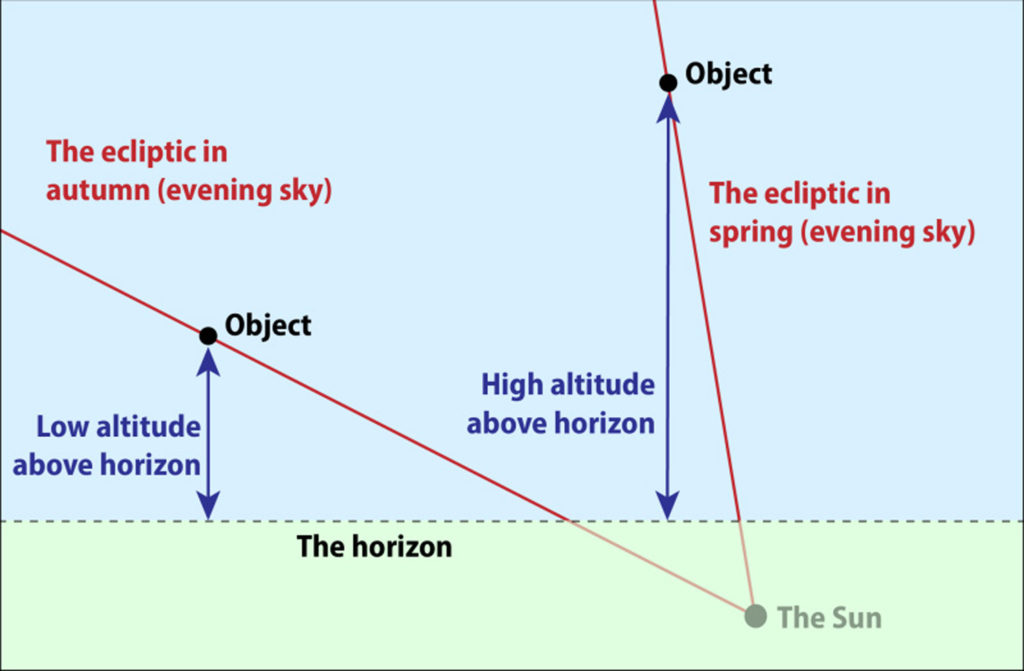Sky Report: November 1-November 7

In early November Venus is at its best, shining brilliantly low in the southwest. It’s certainly bright, but it’s not as high as it could be. The line in the sky that marks the path of the planets is called the “ecliptic”, and you can visualize it tonight by drawing a line through Venus, Saturn, and Jupiter (both to the left of Venus). The sun and the planets are on it and the moon stays near it. Note the relatively shallow angle the ecliptic now makes with the horizon; Venus is 45° from the sun but even at sunset it’s only about 20° high and then it gets lower until it sets 90 minutes after the sun. At this season the ecliptic makes a shallow angle with the horizon, but six months from now it will be much steeper – and if Venus were to be 45° from the sun then, it would twice as high in our sky.
The sun appears to move along the ecliptic too as the days pass. It will be where Venus is now on December 20 and where Jupiter is now on February 11 (the planets will have moved on). These planets are not high now and neither will the sun be high on those dates this winter – which is why it is cold then. The angle changes seasonally because the earth is tilted on its axis. Google “ecliptic” to learn more.
The very thin crescent moon is 2½ degrees (five moon-diameters) to the lower right of Venus on the 7th. The moon is only seven times brighter than far tinier Venus, but we’re seeing mostly the moon’s dark side and “earthshine” (use binoculars).
As implied in first paragraph above, Jupiter is the second brightest thing in the night sky (other than the moon) and it’s to the left of Venus. Saturn is as bright as the brighter stars and it’s 1/3 of the way from Jupiter to Venus – and all are on the ecliptic.
The Taurid meteor shower peaks on the 5th, but it’s a minor shower. Despite what you might read elsewhere, it’s only for specialists and is too weak a shower to bother observing.
Daylight time ends on the 7th; “fall back” in the fall and sets your clocks back from 10 to 9, for example. There’s nothing astronomical about it; it’s a matter of legislation for people’s comfort.
Under a grant from the Utah Governor’s Office of Economic Development and the Kane County Office of Tourism, Stellar Vista Observatory offers portable telescopes and tripod mounted binocular kits on loan for free to all residents of Kane County. Nothing beats a quality binocular or astronomical telescope to enhance enjoyment of the night sky! Visit https://stellarvistaobservatory.org/discover-the-night-sky/ or Kanab City Library for full details.
The Sky Report is presented as a public service by the Stellar Vista Observatory, a nonprofit organization based in Kanab, Utah, which provides opportunities for people to observe, appreciate, and comprehend our starry night sky. Additional information is at www.stellarvistaobservatory.org. Send questions and comments to John@StargazingAdventures.org.






Comments are closed.